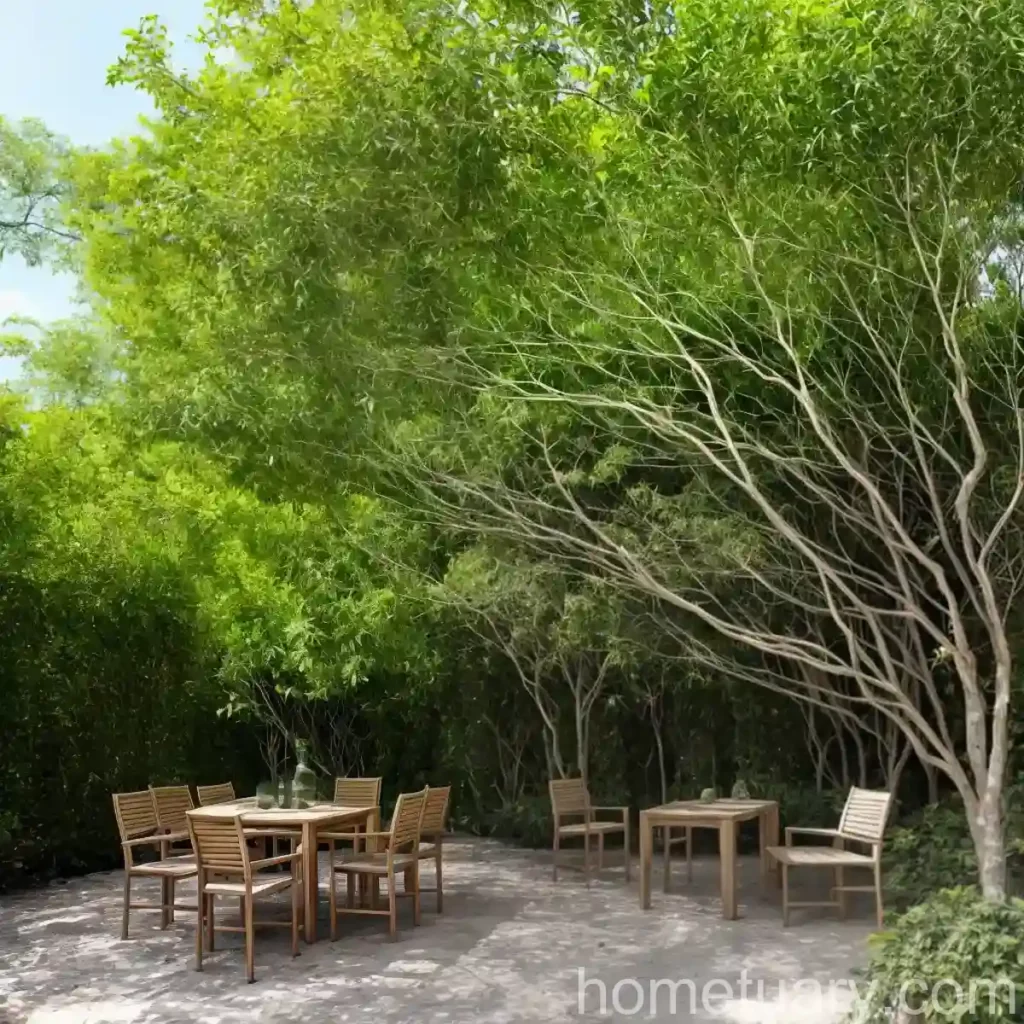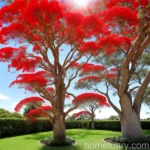The Siberian Peashrub (Caragana arborescens): A Complete Guide
Plants play a significant role in our environment and in our lives. They provide us with food, oxygen, and countless other resources. Additionally, plants contribute to the beauty of our surroundings and offer numerous ecological benefits. In this comprehensive guide, we will delve into the world of the Siberian peashrub, scientifically known as Caragana arborescens. We will explore its characteristics, uses, care requirements, and much more.
What is the Siberian Peashrub (Caragana arborescens)?
The Siberian peashrub, or Caragana arborescens, is a deciduous shrub belonging to the family Fabaceae. This plant is native to Siberia and parts of Asia, and it has been widely cultivated for its ornamental, ecological, and practical purposes.
Key Takeaways – Siberian Peashrub (Caragana arborescens)
Before delving into the specifics of the Siberian peashrub, let’s summarize the key takeaways about this fascinating plant.
- Plant Name: Siberian peashrub (Caragana arborescens)
- Type: Deciduous shrub
- Family: Fabaceae
- Native Habitat: Siberia and parts of Asia
- Uses: Ornamental landscaping, nitrogen fixation, erosion control, wildlife habitat, medicinal properties.
- Key Characteristics: Yellow flowers, drought tolerance, cold hardiness, nitrogen-fixing capabilities.
Culture of Siberian Peashrub (Caragana arborescens)
Understanding the cultural requirements of the Siberian peashrub is essential for successfully cultivating and maintaining this plant. From its water needs to its preferred sunlight exposure, let’s explore the cultural aspects of Caragana arborescens.
Water
Siberian peashrubs are known for their resilience in dry conditions and their remarkable drought tolerance. Once established, these plants have low to moderate water needs. However, regular watering is beneficial during the initial stages of growth and in periods of prolonged drought to support healthy development and flowering.
Sunlight
This shrub thrives in full sun to partial shade. While it can tolerate varying light conditions, providing ample sunlight promotes robust growth and enhances its ornamental features, such as its abundant yellow flowers.
Fertilizer
Caragana arborescens generally does not require heavy fertilization if grown in well-amended soil. However, applying a balanced, slow-release fertilizer in spring can support healthy foliage and flowering. Avoid excessive nitrogen fertilization, as Siberian peashrubs are capable of nitrogen fixation through their root nodules.
Soil
Well-drained soil is crucial for the successful cultivation of Siberian peashrubs. They are adaptable to different soil types, including loamy, sandy, and rocky soils. However, they prefer soils with a slightly acidic to neutral pH. Incorporating organic matter into the soil prior to planting can enhance its fertility and structure.
Pruning Siberian Peashrub (Caragana arborescens)
Pruning is an essential aspect of Siberian peashrub maintenance, primarily for shaping, rejuvenation, and controlling its growth. Understanding the best pruning practices for Caragana arborescens can help promote its health and aesthetic appeal.
- Timing: Pruning is best conducted in late winter or early spring before new growth emerges.
- Techniques: Remove dead, damaged, or crowded branches to improve air circulation and reduce disease susceptibility. Thinning the shrub by selectively removing older branches can also stimulate new growth and vigor.
Propagation of Siberian Peashrub (Caragana arborescens)
There are several methods of propagating Siberian peashrubs, including seed propagation and vegetative propagation. Each approach has its benefits and considerations, allowing gardeners to expand their Caragana arborescens population through preferred techniques.
- Seed Propagation: Harvest mature seeds in late summer or early fall and sow them in well-prepared soil. Keep the soil consistently moist until germination occurs. Seedlings can be transplanted once they have developed several sets of true leaves.
- Vegetative Propagation: Softwood or hardwood cuttings can be utilized to propagate Siberian peashrubs. Select healthy, disease-free stems and treat them with a root-promoting hormone before planting them in a suitable rooting medium. Keep the cuttings moist and provide bottom heat to facilitate root development.
Growing Siberian Peashrub (Caragana arborescens) in Containers
While Siberian peashrubs are commonly grown in landscapes, they are also suitable for container cultivation, providing an opportunity to enjoy their beauty and benefits in smaller spaces.
Container Popularity
- The compact nature of the Siberian peashrub makes it well-suited for container growth, allowing individuals with limited garden space to cultivate this versatile plant.
- Containers also offer the advantage of portability, enabling gardeners to move the shrub to optimal locations based on sunlight and temperature preferences.
Container Common Diseases
When growing Siberian peashrubs in containers, it is important to be mindful of potential diseases that may affect the plant in this setting.
Disease Diagnosis
- Root Rot: Overly wet or poorly drained soil in containers can lead to root rot, which manifests as wilting, yellowing foliage, and stunted growth. Ensure proper drainage and avoid overwatering to prevent this disease.
- Powdery Mildew: Humid conditions and poor air circulation in containerized environments can promote powdery mildew. This fungal disease appears as a powdery white coating on the leaves. Minimize humidity and ensure adequate space between containers to reduce the risk of powdery mildew.
Common Pests
Containerized Siberian peashrubs may also be vulnerable to certain pests, necessitating vigilance and proactive pest management practices.
- Aphids: These small, sap-sucking insects can infest the tender growth of Siberian peashrubs, causing distorted leaves and reduced vigor. Regular monitoring and the application of insecticidal soap can help control aphid populations.
- Spider Mites: Hot and dry conditions in container environments can create favorable conditions for spider mites, which feed on plant sap and cause stippled, discolored foliage. Increasing humidity and utilizing predatory insects or miticides can help manage spider mite infestations.
Botanist’s Tips for Siberian Peashrub (Caragana arborescens)
Experienced botanists and horticulturalists often have valuable insights and tips for cultivating and appreciating the Siberian peashrub. Let’s explore some expert recommendations for maximizing the potential of Caragana arborescens.
Fun Facts
- The vibrant yellow flowers of Siberian peashrubs are not only visually striking but also attract pollinators such as bees and butterflies, contributing to ecological diversity.
- This plant is not only admired for its ornamental qualities but also valued for its ecological benefits, including nitrogen fixation, erosion control, and wildlife habitat provision.
Links to External Resources
- Siberian Peashrub: Plant Profile and Landscaping Ideas
- Growing Caragana arborescens in Container Gardens
- Disease and Pest Management for Siberian Peashrub
- Wildlife Habitat and Ecological Restoration with Caragana arborescens
Conclusion
In conclusion, the Siberian peashrub, or Caragana arborescens, is a multifaceted plant with numerous contributions to offer in various aspects of gardening, landscaping, and ecological preservation. By understanding its cultural needs, propagation methods, and maintenance practices, individuals can harness the full potential of this resilient and valuable shrub. With its striking yellow flowers, ecological benefits, and adaptability, the Siberian peashrub stands as a testament to the remarkable capabilities of plants to enhance our surroundings and support diverse ecosystems. Whether utilized in ornamental landscapes, ecological restoration projects, or wildlife gardens, the Siberian peashrub remains a valuable and captivating addition to our botanical world.
By embracing the knowledge and insights shared in this comprehensive guide, enthusiasts and professionals can confidently engage with the Siberian peashrub, fostering its growth and reaping the benefits it so generously bestows upon the environment and our lives.
Keywords: Caragana arborescens plant, Siberian peashrub tree, Siberian peashrub shrub, Caragana arborescens flowers, Siberian peashrub leaves, Caragana arborescens seeds, Siberian peashrub care, Caragana arborescens cultivation, Siberian peashrub pruning, Caragana arborescens varieties, Siberian peashrub landscaping, Caragana arborescens propagation, Siberian peashrub diseases, Caragana arborescens pests, Siberian peashrub medicinal uses, Caragana arborescens ecological benefits, Siberian peashrub wildlife habitat, Caragana arborescens nitrogen fixation, Siberian peashrub drought tolerance, Caragana arborescens soil requirements, Siberian peashrub winter hardiness, Caragana arborescens ornamental value, Siberian peashrub companion planting, Caragana arborescens zone suitability, Siberian peashrub native habitat, Caragana arborescens ecotypes, Siberian peashrub landscape design, Caragana arborescens windbreak, Siberian peashrub erosion control, Caragana arborescens wildlife food source, Siberian peashrub ecological restoration, Caragana arborescens nitrogen-fixing shrub, Siberian peashrub hedge, Caragana arborescens wind-resistant plant, Siberian peashrub yellow flowers, Caragana arborescens deciduous plant, Siberian peashrub legume family, Caragana arborescens bird nesting site, Siberian peashrub drought-tolerant plant, Caragana arborescens flowering period, Siberian peashrub soil stabilizer, Caragana arborescens medicinal properties, Siberian peashrub food source for bees, Caragana arborescens landscaping ideas, Siberian peashrub shrub for wildlife gardens, Caragana arborescens plant characteristics, Siberian peashrub landscape maintenance, Caragana arborescens low-maintenance plant, Siberian peashrub plant uses, Caragana arborescens drought-tolerant shrub















